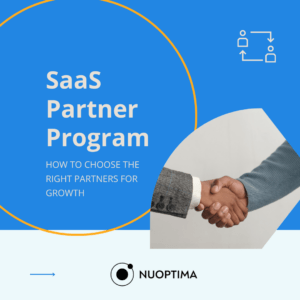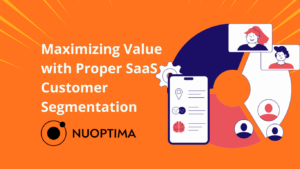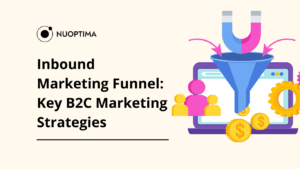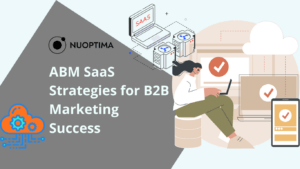Introduction
B2B SaaS (Software as a Service) has transformed how companies operate, offering a shift from traditional software purchasing to subscription-based services. Importantly, the pricing model used for a SaaS product isn’t purely a numerical decision; it’s pivotal to the product’s evolution. It can influence two critical aspects: customer acquisition and retention.
The right pricing structure can act as a magnet, drawing potential clients towards a product by offering them perceived value. It sets the initial impression, determining whether a potential client sees the offering as affordable, premium, or out of reach.
Once a client has signed up, the SaaS pricing strategies continue to play a central role. It can foster loyalty, encourage clients to stay, and even upgrade, or it can become a point of contention, leading to churn. Therefore, understanding and selecting the appropriate pricing model is not just about revenue; it’s about building lasting relationships with clients.
This article delves deeper into the various SaaS billing models, comparing structures and their potential impact on B2B industries. For businesses looking to optimize their billing strategy, consulting with a specialized SaaS consulting agency can provide valuable insights and tailored solutions that align with their specific needs.
To get started, check out our beginner’s guide to SaaS pricing strategies with a video from our very own Founder, Alexej Pikovsky.
The Evolution of SaaS Pricing Models
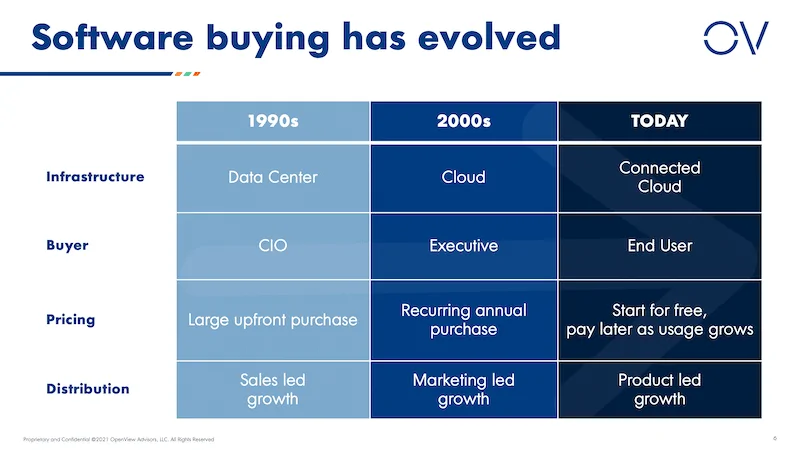
The journey of SaaS pricing is a reflection of the broader shifts in the software industry. Historically, software was often sold as a one-time purchase, where businesses would pay a significant upfront cost to acquire a licence. This licence would grant them the right to use the software indefinitely, often on a specific number of machines or for a set number of users.
However, as the internet became more integrated into business operations, how software was delivered and used began to change. The emergence of cloud computing paved the way for software to be hosted remotely and accessed via the web. This business transformation led to the rise of SaaS, where software wasn’t something you bought and owned but rather a service you subscribed to.
This shift to B2B SaaS subscription pricing models brought several advantages. It meant reduced initial costs for businesses, as they no longer had to invest heavily upfront. Instead, they could pay smaller, regular amounts, turning capital expenditure into operational expenditure. This model also allowed for greater scalability, as companies could adjust their subscription based on their needs.
For software providers, the subscription model ensured a steady stream of revenue. It also fostered a closer relationship with users, as providers now had the incentive to continuously update and refine their offerings to retain subscribers.
Over time, as the SaaS industry matured, pricing models became more varied and sophisticated. From flat-rate subscriptions to usage-based models, the options expanded, allowing providers to cater to diverse business needs and preferences.
Here is a summary of how pricing has evolved:
- Perpetual License: A traditional model where customers pay a one-time fee for lifelong access.
- Subscription-Based: A shift towards recurring fees, typically on a monthly or annual basis, providing continuous access.
- Freemium: This model offers basic services for free, with options to pay for premium features.
- Usage-Based: This approach bills customers according to their actual usage of the services, allowing for more flexible pricing.
- Value-Based: With this model, pricing is aligned with the value or Return on Investment (ROI) that the service provides to the customer.
- Hybrid Models: This most recent stage combines various elements of the above models to create tailored pricing strategies that meet specific customer needs.
Popular B2B SaaS Pricing Strategies
In the SaaS industry, pricing is more than just assigning a monetary value to a product. It’s a reflection of the product’s perceived value, its alignment with market demand, and its ability to drive business growth. While there are many ways to price a SaaS product, certain strategies have gained prominence due to their effectiveness and adaptability.
Here’s a closer look at some of the most prevalent B2B SaaS pricing examples:
Flat-Rate Pricing
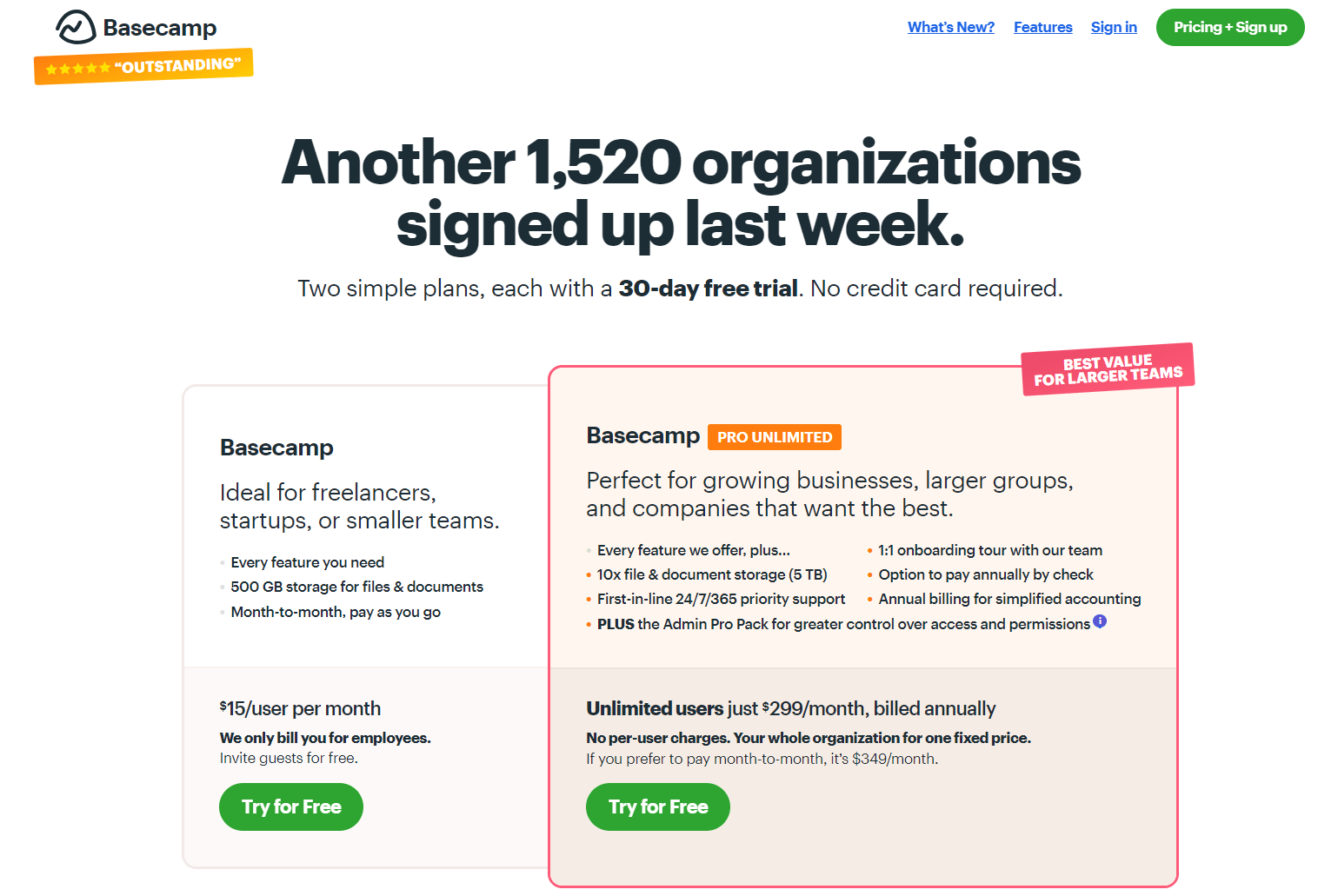
Flat-rate pricing offers a single price for the entire software, irrespective of usage or the number of users. It’s straightforward and eliminates any complexities related to calculating costs based on variables. A great example is project management software provider Basecamp. They offer a flat rate option of $299 per month for unlimited users. This makes their product more attractive to larger teams as they don’t need to pay for each person.
Pros:
- Simplicity makes it easy for customers to understand
- A predictable revenue stream for providers
Cons:
- It might not cater to all customer segments, leading to potential revenue loss
- Less flexibility for different user needs
Usage-Based Pricing

With usage-based pricing, customers are charged based on their actual usage of the software. This could be determined by factors such as the number of API calls, amount of data stored, or hours of service used. Cloud storage providers like Dropbox and communication platforms like Twilio often employ this model.
Pros:
- Fair pricing that aligns with customer value
- Can cater to a wide range of users, from minimal to heavy
Cons:
- Revenue can be unpredictable
- It might deter potential heavy users due to cost concerns
Tiered Pricing

Tiered pricing involves offering different pricing levels based on features or usage limits. Each tier caters to a specific segment of users, providing them with features that match their needs and willingness to pay. It’s essential to analyse customer needs, segment the user base, and align elements with each segment’s willingness to pay to determine the best structure. Many B2B SaaS companies use tiered pricing, including web analytics tool Crazy Egg, CRM platform Hubspot and content checker Grammarly.
Pros:
- Serves diverse customer needs
- Offers potential for upselling
Cons:
- It can become complex for users to choose the right tier
- Risk of overloading more expensive packages with unnecessary features
Per-User Pricing

Customers are charged based on the number of individuals accessing the software in the per-user pricing model. As a company grows and adds more users, the cost scales accordingly. Balancing the price with perceived value is crucial. SaaS platforms like Canva, Slack and Salesforce have found per-user pricing effective for their products.
Pros:
- Revenue scales as companies grow
- Aligns with companies’ growth trajectories
Cons:
- It can lead to price shock with large teams due to escalating costs
- There is a risk of users sharing passwords which can limit your growth potential
Freemium Model
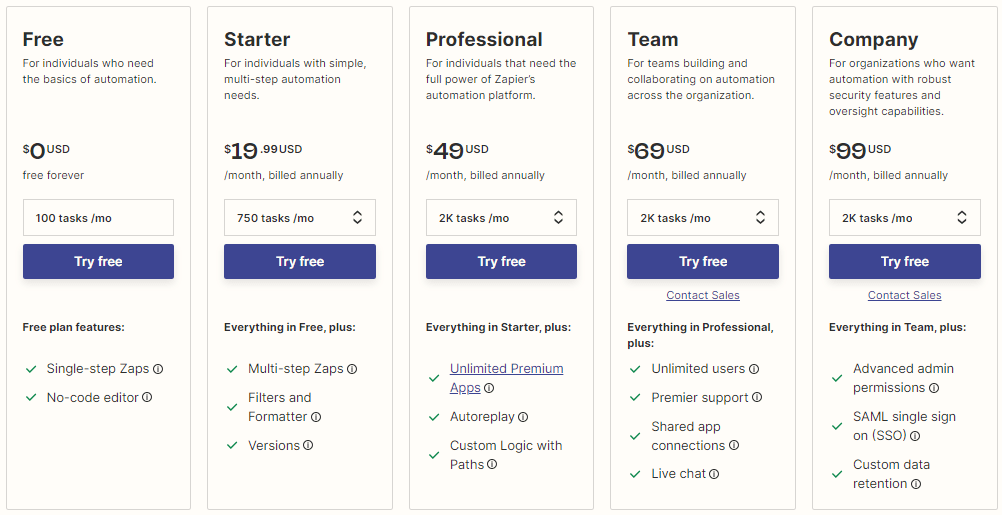
The freemium model offers basic features for free, with advanced features or additional capacities priced separately. The key challenge is converting free users to paid customers. It’s crucial to strike a balance where free features are enticing enough for sign-up but sufficient to encourage upgrades. The B2B SaaS companies making the most of the freemium model include Dropbox, Trello and WordPress. They offer free plans and have made their software desirable enough for millions to upgrade to paid versions.
Pros:
- A low entry barrier encourages wide user acquisition
- Demonstrates value to potential customers before they pay
Cons:
- High support costs for non-paying users
- Conversion from free to paid can be challenging
As highlighted before, while each of these strategies has its merits, value-based pricing often comes out as the preferred solution. This is because it aligns the price with the actual value delivered to the customer, ensuring both parties benefit from the exchange. However, the right strategy will depend on the specific product, market and customer base in question.
Advanced Pricing Strategies in B2B SaaS
As the SaaS industry matures, businesses are exploring more sophisticated pricing strategies to cater to diverse customer needs and maximise revenue. Here’s a closer look at some advanced pricing strategies that have gained traction:
Hybrid Pricing
Hybrid pricing is an amalgamation of multiple pricing models, offering businesses the flexibility to cater to a broader range of customers. By combining, for instance, flat rate with usage-based pricing, companies can provide a stable base price while allowing heavier users to pay more based on their usage. This approach can be particularly effective in catering to both small businesses and larger enterprises within the same platform.
Case Study: A notable example is Slack, the communication platform. While they offer a per-user pricing model, they also ensure that active usage is billed, meaning if a user is inactive, they aren’t counted, effectively merging per-user and usage-based models.
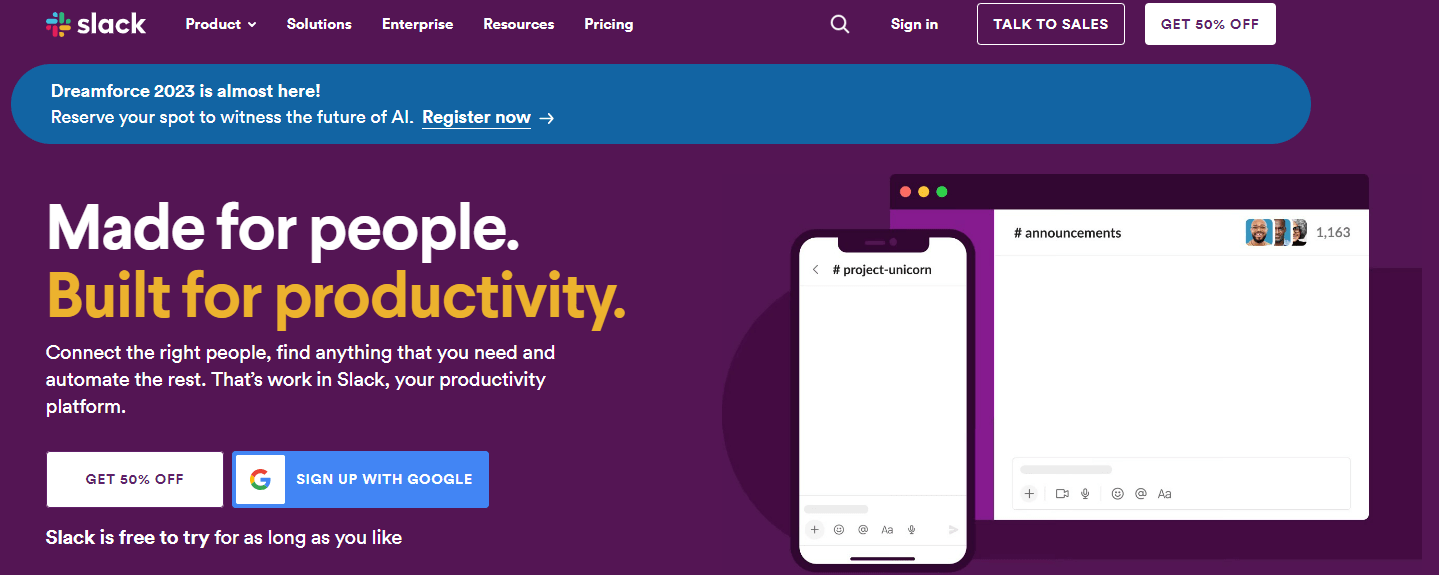
Value-Based Pricing
This strategy revolves around setting a price based on the perceived value of the product to the customer rather than the cost of production. It requires a deep understanding of the customer’s pain points and how the product addresses them.
Businesses can engage in direct conversations with customers, conduct surveys, or analyse usage patterns to discern which features or services provide the most value. The key is to quantify the benefits, whether it’s time saved, increased revenue, or any other tangible metric that resonates with the customer.
Case Study: HubSpot, a full business service suite, employs value-based pricing. They segment their offerings into Hubs (Marketing, Sales, Customer Service, CMS and operations) and then further into tiers based on the scale and needs of businesses. By understanding the value each level provides to businesses of different sizes, HubSpot can price its product in alignment with the benefits and results customers can expect. Their pricing reflects the potential growth and revenue businesses can achieve using their platform.

Feature-Based Pricing
Under this model, the cost is determined by the features or modules a customer opts for. It allows companies to cater to varying needs, from startups wanting basic functionalities to enterprises needing comprehensive solutions.
An integral aspect of feature-based pricing is the potential to upsell and cross-sell. By showcasing the benefits of premium features or illustrating how certain modules complement each other, businesses can encourage customers to upgrade or expand their packages.
Case Study: Zendesk is a customer service software that employs feature-based pricing. They offer multiple plans, each with a distinct set of features. A startup might opt for a basic plan, which covers essential customer service tools. In contrast, a large enterprise might choose a more advanced package with additional features like AI-powered automation and advanced analytics. Zendesk’s model allows them to cater to a wide range of businesses, and by showcasing the benefits of each element, they can effectively upsell and encourage upgrades.
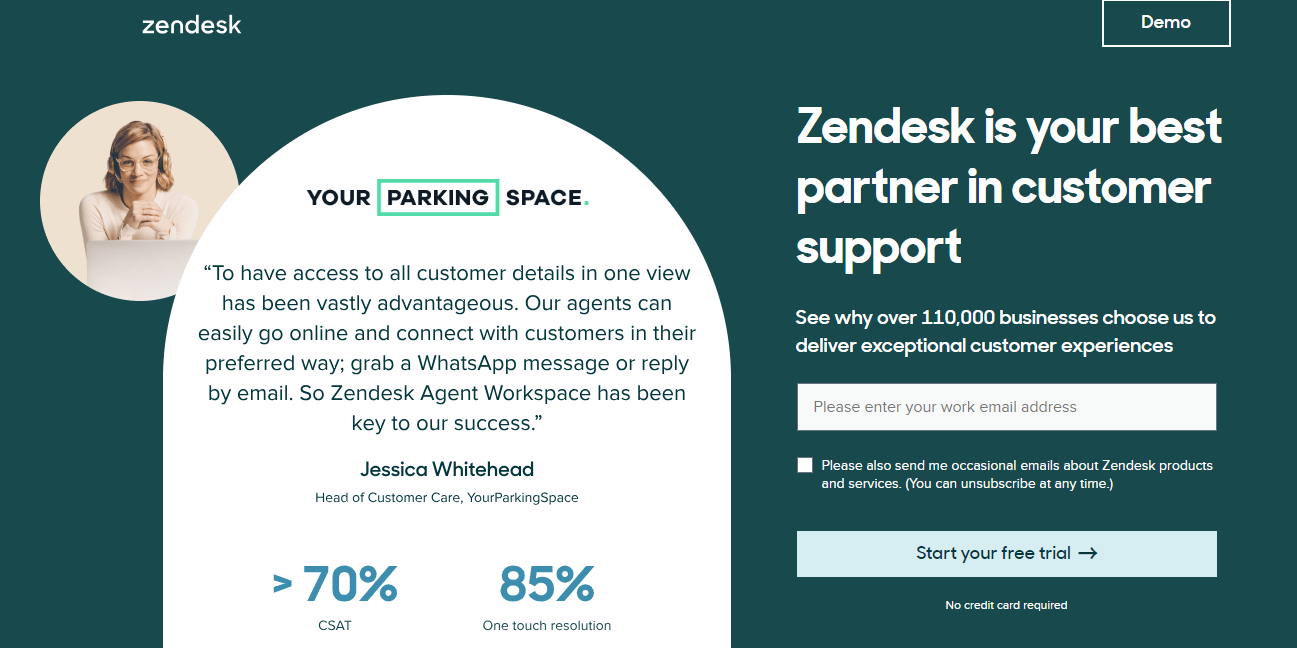
Psychological Pricing in SaaS
Another aspect that comes into play when pricing is the realm of psychology, tapping into cognitive biases and behaviours that influence potential customers’ perceptions and decisions. By understanding these psychological underpinnings, businesses can set prices that resonate more profoundly and encourage purchases.
The following three pricing techniques are commonly found in enterprise SaaS pricing models:
1. Charm Pricing
One such technique is charm pricing, where prices end with an odd number, typically .99 or .95. A product priced at $49.99, for instance, gives the illusion of being closer to $49 than $50, making it seem like a more attractive deal. This subtle difference, rooted in perception rather than actual value, can significantly sway a potential buyer’s decision. HostiFi is a great example of this:

2. Anchor Pricing
Similarly, price anchoring plays on the human tendency to rely heavily on the first piece of information encountered. By setting a reference point, often a higher original price, and juxtaposing it with a discounted price, customers are led to believe they’re securing a bargain. The initial higher price serves as an anchor, making the subsequent offer appear more valuable. Here is an example of how CRO SaaS Convert has used price anchoring:

3. Decoy Pricing
Then there’s decoy pricing, a more nuanced approach that introduces an option primarily to enhance the appeal of another. Imagine two subscription options at $10 and $30. By giving a third decoy option at $25 with fewer features than the $30 choice, the latter suddenly seems like better value for money. This is an example of how Evernote has used this pricing strategy:
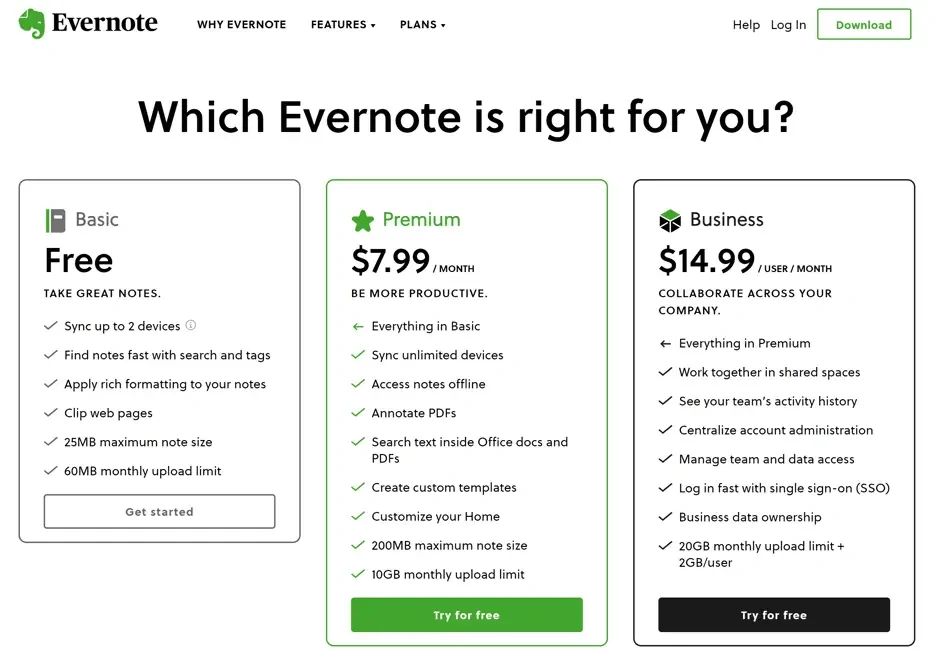
In essence, the world of psychological pricing offers SaaS businesses a toolkit of strategies to influence perceptions and drive desired actions. Many price models will use a mixture of methods to get the highest conversions. It’s a testament to the power of psychology in shaping purchasing behaviours, even in an industry as digitised and data-driven as SaaS.
Challenges in B2B SaaS Pricing
Setting the right price for a B2B SaaS product is not simple. It’s full of challenges that can significantly impact a company’s bottom line and customer relationships. Several key issues often arise in this context, each requiring careful consideration and strategic handling.
Price Sensitivity
Firstly, there’s the issue of price sensitivity. B2B customers, especially larger enterprises, often have set budgets and are aware of the value they expect from their investments. They might compare the perceived value of a SaaS product against its cost, weighing it against other operational expenses. Addressing this sensitivity requires a deep understanding of the customer’s needs and the tangible benefits the product offers. It’s crucial to communicate this value effectively, ensuring that the price reflects the product’s worth in the eyes of potential buyers.
Adjusting Fees
Another challenge is managing price changes. As a SaaS product evolves, there might be a need to adjust its price. However, this can be problematic for existing customers who signed up at a different rate. One common solution is to grandfather these customers, allowing them to continue with their original pricing for a set period or until certain contract conditions change. This approach not only maintains trust but also acknowledges the loyalty of early adopters.
Global Pricing
Then there is the global nature of the SaaS market which introduces the challenge of currency fluctuations. A price that’s competitive in one region might be perceived as expensive in another due to shifts in exchange rates. Moreover, different countries might have varying willingness to pay, influenced by local economic conditions and market maturity. Navigating this requires a dynamic pricing strategy, potentially offering region-specific pricing or periodically adjusting prices in response to significant currency shifts.
Tools and Resources for SaaS Pricing
Having the right tools and resources at your disposal can make a significant difference when pricing B2B SaaS. These resources not only help in determining the optimal price but also in managing and adjusting it based on market feedback and changing business needs. Moreover, the role of A/B testing in pricing decisions cannot be overstated, as it provides real-world insights into customer preferences and price elasticity.
A/B Testing in Pricing Decisions
A/B testing, often termed split testing, involves presenting two different pricing models to similar audience segments and analysing which one performs better in terms of conversions, revenue, or other relevant metrics. This empirical approach allows businesses to make informed decisions, reducing the guesswork in pricing. By understanding how different price points or structures affect customer behaviour, companies can refine their pricing strategy to maximise profitability and customer satisfaction.
Key Tools for SaaS Pricing
Below is a table highlighting some of the prominent tools that can assist businesses in their SaaS pricing journey:
| Tool | Functionality | Key Benefits |
| Price Intelligently | Pricing optimisation based on value metrics and competitor analysis. | Provides insights into customer willingness to pay and price elasticity. |
| Pendo | Product experience platform that can be used for in-app A/B testing. | Enables real-time feedback on pricing changes within the app environment. |
| ChartMogul | Subscription analytics and revenue reporting. | Offers a clear view of how pricing changes impact revenue and churn. |
| Optimizely | A/B testing platform for websites and apps. | Facilitates split testing of different pricing pages or models to gauge customer response. |
| Baremetrics | Analytics and insights specifically for SaaS businesses. | Helps in understanding revenue patterns and the impact of pricing decisions. |
Factors to Consider
When you launch a B2B SaaS venture, you’ll need to carefully select the right pricing model for your product. Here are some of the essential factors to consider:
Market Demand
Understanding market demand is fundamental. It involves gauging the appetite for your product in the current landscape. Are businesses actively seeking solutions like yours? If so, how urgently? Recognising the level of demand can guide the pricing and the features or services you prioritise.
Competitor Analysis
No product exists in a vacuum. You can discern where your product stands in the broader ecosystem by analysing competitors. This doesn’t mean mimicking others’ prices but rather understanding the value propositions they offer at different price points. Such insights can help you position your product more effectively, ensuring it provides compelling value for its cost.
Customer Willingness to Pay
Lastly, and perhaps most crucially, is gauging how much customers are willing to part with for your solution. This involves direct conversations, surveys, or pilot pricing tests to gather feedback. Remember, the price should reflect the value your product brings to the table. If customers see clear benefits and a positive return on investment, they’re more likely to perceive the price as fair.
Conclusion
The significance of a meticulously crafted pricing strategy cannot be understated for B2B SaaS. It serves as a linchpin, balancing the value delivered to customers with the sustainability and growth aspirations of the business. A well-considered pricing model not only reflects the product’s worth but also resonates with the target audience, ensuring alignment with their expectations and perceived value.
However, the SaaS landscape is ever-evolving, influenced by technological advancements, shifting customer needs, and market trends. As such, it’s imperative for businesses to adopt a fluid approach to pricing. Continuous evaluation, informed by market feedback, is essential. This iterative process allows companies to fine-tune their pricing models, ensuring they remain relevant, competitive, and in tune with customer sentiment.
In essence, while the initial formulation of a pricing strategy is crucial, its ongoing assessment and adaptation are equally vital. By staying attuned to market feedback and being willing to adjust, businesses can navigate the complexities of the SaaS industry and foster enduring relationships with their customers.
FAQ
B2B pricing strategies are methods businesses use to set prices for their software or services, targeting other companies. Common strategies include value-based, tiered, and usage-based pricing.
Price your B2B SaaS by assessing the value it offers to customers, researching competitor pricing, understanding your costs, and considering market demand.
Tiered pricing in SaaS involves offering a selection of plans. For example, a three-tiered plan might be Basic, Pro, and Premium, each with a different set of features and corresponding prices.
The freemium pricing model in SaaS offers basic features for free, with advanced features or additional capacities priced separately.
SaaS is subscription-based, often cloud-hosted, and provides regular updates. Traditional software licensing typically involves a one-time purchase, is installed on individual machines, and might require additional payments for major updates.
